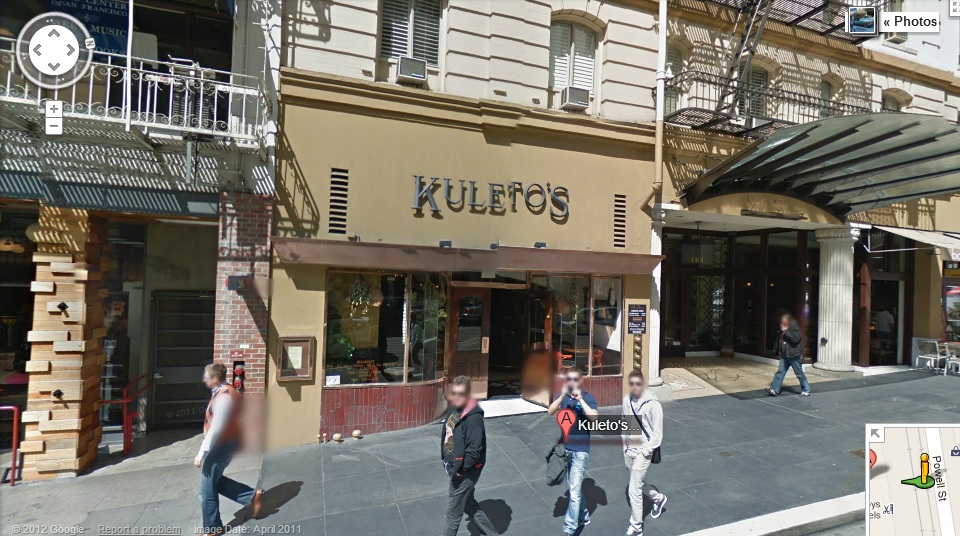
Take a look at this map:
[aditude-amp id="flyingcarpet" targeting='{"env":"staging","page_type":"article","post_id":548439,"post_type":"guest","post_chan":"none","tags":null,"ai":false,"category":"none","all_categories":"business,media,","session":"A"}']Kuleto’s is facing the wrong street. iOS Maps shows it on O’Farrell Street. It’s address and entrance are actually on Powell Street, around the corner. (Google Maps has it correct.)
AI Weekly
The must-read newsletter for AI and Big Data industry written by Khari Johnson, Kyle Wiggers, and Seth Colaner.
Included with VentureBeat Insider and VentureBeat VIP memberships.
Such errors are common on maps. They exist for a number of reasons:
- At its very best, GPS is accurate to about 7-9 feet. But in urban canyons, accuracy can drop off because satellites are obstructed by tall buildings.
- Some businesses use vanity addresses. In New York City, it’s fashionable to have an address on Park Avenue, but the actual building entrance may be on 48th Street.
- Map makers don’t record the actual entrance to every business on a street. Generally, in the U.S., they record the block numbers and which side is even and which side is odd. The intermediate addresses are approximated.
As a result, errors on a block are common.
There’s a simple fix: Let users pick up the business and move it to the right place and automatically publish the results. Apple does allow users to report errors. I moved Kuleto’s to its correct location, but Apple hasn’t processed the update yet.
User-generated content is fraught with problems and opportunities for mischief. If you let people delete businesses, some will delete their competitors or businesses they don’t like. If you let people add businesses, they will spam your results with dummy businesses. The trick is to balance the mischief with the potential for more accurate data. This is something that Google has a lot of experience at. It’s been fine-tuning how it handles user-generated content in Maps for years. In its core search business, it’s been dealing with spam for more than a decade.
Letting people move existing businesses within the margin of error of current mapping methods strikes me as an acceptable balance.
Otherwise, the only quick way for Apple to verify the change is correct is to use Google’s Street View to get visual confirmation. It might face some legal issues with that. (Disclosure: I have Apple stock.)
[aditude-amp id="medium1" targeting='{"env":"staging","page_type":"article","post_id":548439,"post_type":"guest","post_chan":"none","tags":null,"ai":false,"category":"none","all_categories":"business,media,","session":"A"}']
VentureBeat's mission is to be a digital town square for technical decision-makers to gain knowledge about transformative enterprise technology and transact. Learn More